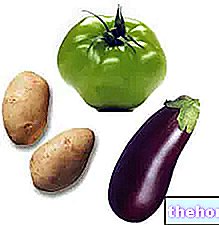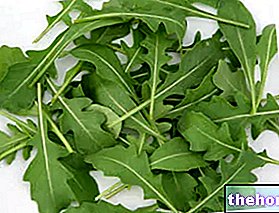" first part
HYDROGENATED FATTY ACIDS: normally fatty acids of vegetable origin are liquid at room temperature. They can be made solid by the hydrogenation process which alters their chemical structure making them particularly harmful to our health. In this way the so-called trans or hydrogenated fatty acids are obtained. Their consumption should be limited as much as possible because in addition to raising the bad cholesterol (LDL) they decrease the good one (HDL).
OILS FOR FRYING: for frying it is recommended to use mainly oils with a high content of monounsaturated fatty acids, such as extra virgin olive oil. Instead, the use of oils rich in polyunsaturated fats, which degrade more easily at high temperatures, should be limited.
How Much Fat in a Balanced Diet?
The oxidation of one gram of fat develops 9 Kcal, more than double compared to the same amount of carbohydrates and proteins. They are therefore high-calorie nutrients and their excessive consumption inevitably causes an increase in body fat (as suggested by the proponents of the Mediterranean diet).
However, it is necessary to take into account the high satiating power of lipids. Unlike starchy foods, those containing lipids require a longer digestion time, slowing down the onset of hunger and keeping blood sugar relatively constant.
This feature is fundamental since a meal rich in carbohydrates and low in fat, such as pasta or rice "in white", in addition to having a high calorie content, increases the stimulus of hunger already after a couple of "hours from its intake. .
Just to give an example, a dish of 100 grams of pasta and 10 grams of olive oil brings about 355 Kcal, the equivalent of 75 grams of pasta with 100 grams of salmon and a little parsley.
Each of us should therefore realize, once and for all, that eating plenty of bread and pasta is really easy to exceed calories, since their satiating power is very low.
However, it should be noted that foods containing high percentages of lipids (such as dried fruit) are not very satiating immediately. If, for example, we eat 5 nuts at the end of the fifth, we will hardly feel full and, if common sense does not intervene to stop, we Take them to eat more, so it is advisable to combine fat with adequate amounts of fiber and protein, for example by eating an apple with 6 or 7 almonds as a snack.
The lipids also have a decidedly higher flavor than the other nutrients and ensure a feeling of "contentment" which makes the diet more bearable.
In concrete terms, it is advisable to take a quantity of fat equal to 30-40% of the daily caloric intake (against the 25% imposed by the Mediterranean diet). However, it is a very low quantity considering the high caloric power of the lipids.
For example, if our daily caloric requirement is 2000 Kcal, the recommended fat intake varies from 78 to 90 grams per day, the equivalent of 30 grams of olive oil, 25 grams of grated cheese, 20 grams of walnuts, 200 grams of beef and 200 grams of salmon (total = about 75 grams of fat). These are therefore absolutely normal quantities for our diet, considering the presence of lipids also in the rest of the foods we use daily.
On the contrary, the Mediterranean diet is too restrictive because it would advise the same subject not to exceed 55 grams of fat per day (100 grams of mozzarella, 20 grams of olive oil and a brioche would be enough to exceed this value).
Optimal distribution of the lipid content in the various types of fatty acids
As for the lipid quality, the scheme proposed by the Mediterranean diet is all in all acceptable even if, as we have seen, the advice to limit saturated fats as much as possible is a bit too restrictive. The division between the various types of fats should be made according to the following scheme:
- 1/3 of saturated fatty acids
- 1/2 of monounsaturated fatty acids
- 1/4 of polyunsaturated fatty acids (at least 12 grams per day)
NOTES: it is advisable not to take more than 300 mg of cholesterol per day
the intake of trans fatty acids should not exceed 5 g per day, in any case it is good to reduce their consumption as much as possible
From a practical point of view, this breakdown can be obtained by consuming:
- 2/3 of plant-based lipids (oils)
- 1/3 of lipids of animal origin (butter, fatty meats, eggs, etc.
- fish at least 3-4 times a week; it is in fact difficult to reach the need for essential fatty acids without regularly consuming this precious food.
The deficiency, rare in men, is characterized by: dry and scaly skin, rebellious impetiges, eczematous lesions, peri-anal irritation, generalized erythema, frequent bowel movements, bristly and sparse hair and thrombocytopenia.




























